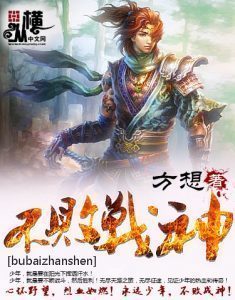Novel Name : The World Online
The World Online Chapter 1071 Final Battle Map
Chapter 1071 – Final Battle Map
Dali submitting, apart from announcing the start of the China region merging progression, it also had another huge meaning for Great Xia.
It was already the 15th day of the 7th month, and a year had passed since Gaia established the country. To upgrade Great Xia to an emperor dynasty was Ouyang Shuo's current goal.
Ouyang Shuo calculated that along with Dali joining him, out of the nine basic requirements, Great Xia had achieved seven, and they were only left with requirements 3 and 9.
Requirement 3: Dynasty must at least occupy a third and above of its regional land.
Based on the rules set by Gaia, Tibet, West Xia, Turk Khanate, Mongol, and Jin Country all belonged to China land. As a result, although Great Xia had already taken down the entire south and also opened up a huge amount of land overseas, it needed to take down one of the few before it would reach the standard.
Not mentioning Mongol and the Turk Khanate, the most suitable ones were Tibet and Jin Country.
Ouyang Shuo had already shifted his target to Jin Country, ordering Beijiang Legion Corps marshal Yue Fei to increase their infiltration and investigation of Jin Country whilst reorganizing the army to try to take them down by the end of the year.
Requirement 9: Have at least 1 country upgrading treasure.
This was the requirement that gave Ouyang Shuo a headache. Although he had obtained the emperor jade, he did not know what he had to do to trigger the Yu the Great Nine Cauldrons quest.
Of course, Ouyang Shuo believed that Gaia would not give him a quest that could not be completed. As a result, he could only wait patiently.
...
In the next week, Ouyang Shuo did not remain in the Capital City. Instead, he went toward the newly occupied Beijiang Province, Hanoi Province, and Siam to tour, visiting the soldiers whilst calming down the local nobles to stabilize the people's sentiment.
At this juncture, Great Xia started a brand-new round of migration project.
Ouyang Shuo's goal was to move 70% of the players in China into Great Xia rule. As a result, this round of migration's scale was really huge and the requirements were relatively less.
Great Xia was prepared to bring in 15 million players to live at the various prefectures in Great Xia.
They especially encouraged players to go toward Hanoi, Edo, Seoul, Bangkok, Vientiane, and Phnom Penh to live, using the satellite cities in each of them to explore the underground world.
Toward the players living in Dali, the Imperial Court gave them a lot of freedom to reduce the population pressure on Dali.
Compared to Qin, Han, Shu, Sui, Tang, Song, and other NPC dynasties, Great Xia was not only stronger, but more prosperous and understood players more. Hence, they set up a series of welfare policies.
Moving to live in Great Xia was not a tough choice to make.
When this round of migration ended, along with the Dali players, the number of Great Xia players would reach 40 million, taking up half of China.
With that, the position of Great Xia would be infallible.
...
7th month, 22nd day, just when Ouyang Shuo was touring Siam, a System Notification messed up his plans, making him hurry back to the Capital City.
"System Notification: Congratulations player Feng Qiuhuang for becoming the 3rd player in China to upgrade to Capital City, awarded 800 thousand merit points, congratulations player!"
...
"World Notification: Congratulations player Feng Qiuhuang for becoming the 9th city in the world to upgrade to Capital City, awarded 50 thousand merit points, 100 thousand reputation points, congratulations player!"
...
"System Notification: All of China's territories have upgraded to Capital City, triggering Battle Map system, 10th Battle Map, Qing Destroys Ming battle will start in three days. Friendly Reminder: this is not a compulsory battle quest, and only capital cities that meet the requirement can participate."
...
Listening to the name of the Battle Map, Ouyang Shuo knew that this should be the last one in the China region. After this, both the Ming and Qing dynasties would enter the game progression.
"This really is...."
Ouyang Shuo shook his head bitterly. No matter how the Beijiang Legion Corps prepared, they would not be able to avoid being pincered by Jin Country and Jingdu.
Gaia mentioned it really clearly in the System Notification that the condition for triggering the Battle Map was the upgrading of the 3rd Capital City.
It was foreseeable that if Pill Sun City, King City, and Blood Red City did not merge into Great Zhou, the last Battle Map would drag on and not appear for a long period of time.
Gaia used 10 Battle Maps to finish introducing China's history.
For this Battle Map in particular, there would be a lot of focal points. First, the name of the battle itself. That was because the Ming Dynasty was not wiped out by Qing Dynasty but by Li Zicheng.
1644 AD, Li Zicheng, whose reputation was growing day by day, led the Dashun army to attack the capital, signaling the destruction of the Ming Dynasty that lasted for 276 years.
As for the remnants of the Ming Dynasty, they formed the south Ming regime.
That China had four powers, one of which was the Great Qing built by the Nuzhen emperor, controlling 200 thousand troops. The region they controlled was the area near Liao Dong and the area around the capital.
The one defending Shanhai Pass was Wu Sangui.
Apart from Great Qing, there were Jianye's south Ming Hongguang regime, the Dashun regime led by Li Zicheng as well as the Great Xi regime led by Zhang Xianzhong. Their powers exceed that of the Qing army, and they occupied the south and the entirety of the north and west.
The day before the Qing troops moved into the pass, the emperor of Great Qing suddenly died.
The Prince Regent Dorgon chose to first take down the northwest before heading southeast. Whilst gathering up strength to stabilize the region around Yanjing, he planned to attack Li Zicheng, who was the most threatening. After wiping them out, with the north of Guangda as a backline, they would attack South Ming to break through on all fronts.
Hence, this was how Ouyang Shuo deciphered the Qing Destroys Ming battle.
Similar to the Mongol army, to maintain the rule and spread their culture, these people announced the plait cutting order. The Qing army had numerous city slaughtering cases in China, hurting tens of millions of civilians.
The order was, "Leave the head, cut the hair, leave the hair, cut the head."
The cruelest one belonged to the 10 days of Yangzhou, and the Jiading three massacre, both of which caused a reduction in China's population. Moreover, many regions saw the case of counties having empty villages, villages having empty houses, houses being empty, and people without wives.
The Yangzhou city massacre happened when Shi Kefa led the Yangzhou army to defend against the Qing army invasion and failed. The Qing army started an all-out massacre on the civilians in the city.
In the Yangzhou 10 days diary written by Wang Xiuchu, he recorded that the massacre continued for 10 days, which was how it got its name.
Yangzhou fell after 10 days of resistance, and the Qing soldiers killed and pillaged for 10 days before sheathing their blades.
The Yangzhou City was stacked up with corpses, blood seeped into the group, buildings were destroyed, and fires blazed.
Apart from the civilians who escaped and those who hid really well, pretty much all the civilians were massacred. Just the collected bodies exceeded 800 thousand.
In the Qing Dynasty, where intellectuals were persecuted for their writing, all records of the massacre were covered up after the Qing army entered. As a result, most people did not know anything about it till the end of the Qing Dynasty.
The Jiading three massacres happened in 1645 AD, where after the Qing army broke into Jiading, they massacred the civilians three times. The Qing army announced the plait cutting order, which the civilians did not follow. Hou Dongceng led men to revolt against the Qing. Qing Dynasty Wusong general Li Chengdong led five thousand troops to assist right away.
When Jiading City was broken, Li Chengdong immediately ordered his troops to massacre the city.
Out of all of them, some were hung, some were thrown into wells, some jumped into rivers, some faces were bloody, some limbs were broken, and some were chopped up, creating a horrific sight.
Women in the city were raped, and if they resisted, the soldiers would nail their hands on the doors for everyone to rape them.
The massacre lasted for a day until the corpses filled up the river. Around 30 thousand people fell victim.
After which, Li Chengdong led the soldiers to leave the city.
However. the pillaging did not stop. Four days later, those who escaped snuck back into the city.
After they returned to the city, under the lead of a fellow named Zhu Ying, they gathered up around two thousand men. He led them to open up a counter massacre operation, killing the troops that surrendered to Qing as well as the officials that worked with Qing.
Li Chengdong led an army to attack the city once more, killing many sleeping civilians, gathering their corpses and subsequently burning them. This was the second massacre.
20 days later, a South Ming person known as Wu Zifan led his troops to attack Jiading City, and the civilians all helped and chased the Qing troops away.
Not long after, Li Chengdong reorganized his army and killed Wu Zifan's troops, killing close to 20 thousand Jiading civilians.
The Qing army often wiped out the surrendered soldiers and civilians, leaving a bunch of slaves that followed them.
Apart from that, Qing killed a million Miao race people and millions of Huo people, wiping out the Dzungar tribe such that only a kid was left. They were a rarely seen brutality in the world.
Dali submitting, apart from announcing the start of the China region merging progression, it also had another huge meaning for Great Xia.
It was already the 15th day of the 7th month, and a year had passed since Gaia established the country. To upgrade Great Xia to an emperor dynasty was Ouyang Shuo's current goal.
Ouyang Shuo calculated that along with Dali joining him, out of the nine basic requirements, Great Xia had achieved seven, and they were only left with requirements 3 and 9.
Requirement 3: Dynasty must at least occupy a third and above of its regional land.
Based on the rules set by Gaia, Tibet, West Xia, Turk Khanate, Mongol, and Jin Country all belonged to China land. As a result, although Great Xia had already taken down the entire south and also opened up a huge amount of land overseas, it needed to take down one of the few before it would reach the standard.
Not mentioning Mongol and the Turk Khanate, the most suitable ones were Tibet and Jin Country.
Ouyang Shuo had already shifted his target to Jin Country, ordering Beijiang Legion Corps marshal Yue Fei to increase their infiltration and investigation of Jin Country whilst reorganizing the army to try to take them down by the end of the year.
Requirement 9: Have at least 1 country upgrading treasure.
This was the requirement that gave Ouyang Shuo a headache. Although he had obtained the emperor jade, he did not know what he had to do to trigger the Yu the Great Nine Cauldrons quest.
Of course, Ouyang Shuo believed that Gaia would not give him a quest that could not be completed. As a result, he could only wait patiently.
...
In the next week, Ouyang Shuo did not remain in the Capital City. Instead, he went toward the newly occupied Beijiang Province, Hanoi Province, and Siam to tour, visiting the soldiers whilst calming down the local nobles to stabilize the people's sentiment.
At this juncture, Great Xia started a brand-new round of migration project.
Ouyang Shuo's goal was to move 70% of the players in China into Great Xia rule. As a result, this round of migration's scale was really huge and the requirements were relatively less.
Great Xia was prepared to bring in 15 million players to live at the various prefectures in Great Xia.
They especially encouraged players to go toward Hanoi, Edo, Seoul, Bangkok, Vientiane, and Phnom Penh to live, using the satellite cities in each of them to explore the underground world.
Toward the players living in Dali, the Imperial Court gave them a lot of freedom to reduce the population pressure on Dali.
Compared to Qin, Han, Shu, Sui, Tang, Song, and other NPC dynasties, Great Xia was not only stronger, but more prosperous and understood players more. Hence, they set up a series of welfare policies.
Moving to live in Great Xia was not a tough choice to make.
When this round of migration ended, along with the Dali players, the number of Great Xia players would reach 40 million, taking up half of China.
With that, the position of Great Xia would be infallible.
...
7th month, 22nd day, just when Ouyang Shuo was touring Siam, a System Notification messed up his plans, making him hurry back to the Capital City.
"System Notification: Congratulations player Feng Qiuhuang for becoming the 3rd player in China to upgrade to Capital City, awarded 800 thousand merit points, congratulations player!"
...
"World Notification: Congratulations player Feng Qiuhuang for becoming the 9th city in the world to upgrade to Capital City, awarded 50 thousand merit points, 100 thousand reputation points, congratulations player!"
...
"System Notification: All of China's territories have upgraded to Capital City, triggering Battle Map system, 10th Battle Map, Qing Destroys Ming battle will start in three days. Friendly Reminder: this is not a compulsory battle quest, and only capital cities that meet the requirement can participate."
...
Listening to the name of the Battle Map, Ouyang Shuo knew that this should be the last one in the China region. After this, both the Ming and Qing dynasties would enter the game progression.
"This really is...."
Ouyang Shuo shook his head bitterly. No matter how the Beijiang Legion Corps prepared, they would not be able to avoid being pincered by Jin Country and Jingdu.
Gaia mentioned it really clearly in the System Notification that the condition for triggering the Battle Map was the upgrading of the 3rd Capital City.
It was foreseeable that if Pill Sun City, King City, and Blood Red City did not merge into Great Zhou, the last Battle Map would drag on and not appear for a long period of time.
Gaia used 10 Battle Maps to finish introducing China's history.
For this Battle Map in particular, there would be a lot of focal points. First, the name of the battle itself. That was because the Ming Dynasty was not wiped out by Qing Dynasty but by Li Zicheng.
1644 AD, Li Zicheng, whose reputation was growing day by day, led the Dashun army to attack the capital, signaling the destruction of the Ming Dynasty that lasted for 276 years.
As for the remnants of the Ming Dynasty, they formed the south Ming regime.
That China had four powers, one of which was the Great Qing built by the Nuzhen emperor, controlling 200 thousand troops. The region they controlled was the area near Liao Dong and the area around the capital.
The one defending Shanhai Pass was Wu Sangui.
Apart from Great Qing, there were Jianye's south Ming Hongguang regime, the Dashun regime led by Li Zicheng as well as the Great Xi regime led by Zhang Xianzhong. Their powers exceed that of the Qing army, and they occupied the south and the entirety of the north and west.
The day before the Qing troops moved into the pass, the emperor of Great Qing suddenly died.
The Prince Regent Dorgon chose to first take down the northwest before heading southeast. Whilst gathering up strength to stabilize the region around Yanjing, he planned to attack Li Zicheng, who was the most threatening. After wiping them out, with the north of Guangda as a backline, they would attack South Ming to break through on all fronts.
Hence, this was how Ouyang Shuo deciphered the Qing Destroys Ming battle.
Similar to the Mongol army, to maintain the rule and spread their culture, these people announced the plait cutting order. The Qing army had numerous city slaughtering cases in China, hurting tens of millions of civilians.
The order was, "Leave the head, cut the hair, leave the hair, cut the head."
The cruelest one belonged to the 10 days of Yangzhou, and the Jiading three massacre, both of which caused a reduction in China's population. Moreover, many regions saw the case of counties having empty villages, villages having empty houses, houses being empty, and people without wives.
The Yangzhou city massacre happened when Shi Kefa led the Yangzhou army to defend against the Qing army invasion and failed. The Qing army started an all-out massacre on the civilians in the city.
In the Yangzhou 10 days diary written by Wang Xiuchu, he recorded that the massacre continued for 10 days, which was how it got its name.
Yangzhou fell after 10 days of resistance, and the Qing soldiers killed and pillaged for 10 days before sheathing their blades.
The Yangzhou City was stacked up with corpses, blood seeped into the group, buildings were destroyed, and fires blazed.
Apart from the civilians who escaped and those who hid really well, pretty much all the civilians were massacred. Just the collected bodies exceeded 800 thousand.
In the Qing Dynasty, where intellectuals were persecuted for their writing, all records of the massacre were covered up after the Qing army entered. As a result, most people did not know anything about it till the end of the Qing Dynasty.
The Jiading three massacres happened in 1645 AD, where after the Qing army broke into Jiading, they massacred the civilians three times. The Qing army announced the plait cutting order, which the civilians did not follow. Hou Dongceng led men to revolt against the Qing. Qing Dynasty Wusong general Li Chengdong led five thousand troops to assist right away.
When Jiading City was broken, Li Chengdong immediately ordered his troops to massacre the city.
Out of all of them, some were hung, some were thrown into wells, some jumped into rivers, some faces were bloody, some limbs were broken, and some were chopped up, creating a horrific sight.
Women in the city were raped, and if they resisted, the soldiers would nail their hands on the doors for everyone to rape them.
The massacre lasted for a day until the corpses filled up the river. Around 30 thousand people fell victim.
After which, Li Chengdong led the soldiers to leave the city.
However. the pillaging did not stop. Four days later, those who escaped snuck back into the city.
After they returned to the city, under the lead of a fellow named Zhu Ying, they gathered up around two thousand men. He led them to open up a counter massacre operation, killing the troops that surrendered to Qing as well as the officials that worked with Qing.
Li Chengdong led an army to attack the city once more, killing many sleeping civilians, gathering their corpses and subsequently burning them. This was the second massacre.
20 days later, a South Ming person known as Wu Zifan led his troops to attack Jiading City, and the civilians all helped and chased the Qing troops away.
Not long after, Li Chengdong reorganized his army and killed Wu Zifan's troops, killing close to 20 thousand Jiading civilians.
The Qing army often wiped out the surrendered soldiers and civilians, leaving a bunch of slaves that followed them.
Apart from that, Qing killed a million Miao race people and millions of Huo people, wiping out the Dzungar tribe such that only a kid was left. They were a rarely seen brutality in the world.
Rankings

To Cure the Playboy
Hailey Allen
Read To Cure the Playboy by Hailey Allen. Genre: Chinese novels. Read the full novel online for free hereRecovering from
Love Has its Will by Selena Lewis
Selena Lewis
Read Love Has its Will by Selena Lewis by Selena Lewis. Genre: Chinese novels. Read the full novel online for free hereT
World Teacher – Other World Style Education & Agent
Neko Kouichi
A man who was once called the world strongest agent ended up becoming a teacher after his retirement to train the new ge
Undefeated God of War
方想
Youth, is meant to be used to shed sweat under the sun!Youth, is to continuously engage in battles, and secure the win!
My Entire Class Was Summoned to Another World except for Me
サザンテラス
A god of a different world had abruptly appeared in my classroom and semi-forcibly summoned the entire class to his worl
I Stayed At Home For A Century, When I Emerged I Was Invincible
Halfway Breeze
Chu Xuan transmigrated to a fantasy world and became the young master of a powerful family. He was rebuked for misbehavi
I'm the King Of Technology
Lumydee
Chu Yi dies in a car crash and becomes Landon Barn, the illegitimate son of king Barn, ruler of Arcadina. Because his mo
Kiss Me Goodnight, Mrs. CEO!
黛蜜儿
In the middle of the night, looking at the woman in his embrace, he smiled devilishly, “With your discontentment, do y
A Man Like None Other
Unknown
Read A Man Like None Other by . Genre: Chinese novels. Read the full novel online for free here.Jared Chance seethes wit
One Useless Rebirth
不会下棋
He Bai won the lottery, became rich, and reached the pinnacle of life. Then, he inadvertently took a picture of the Film